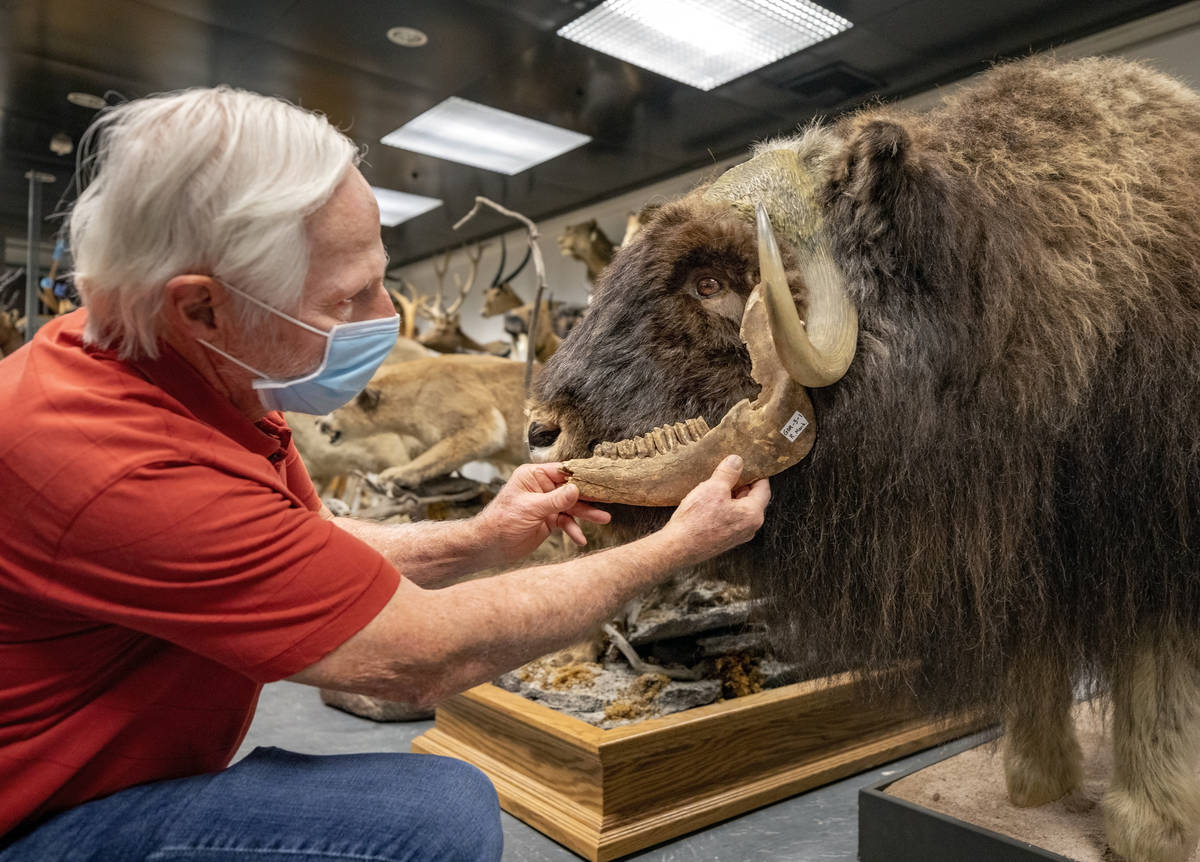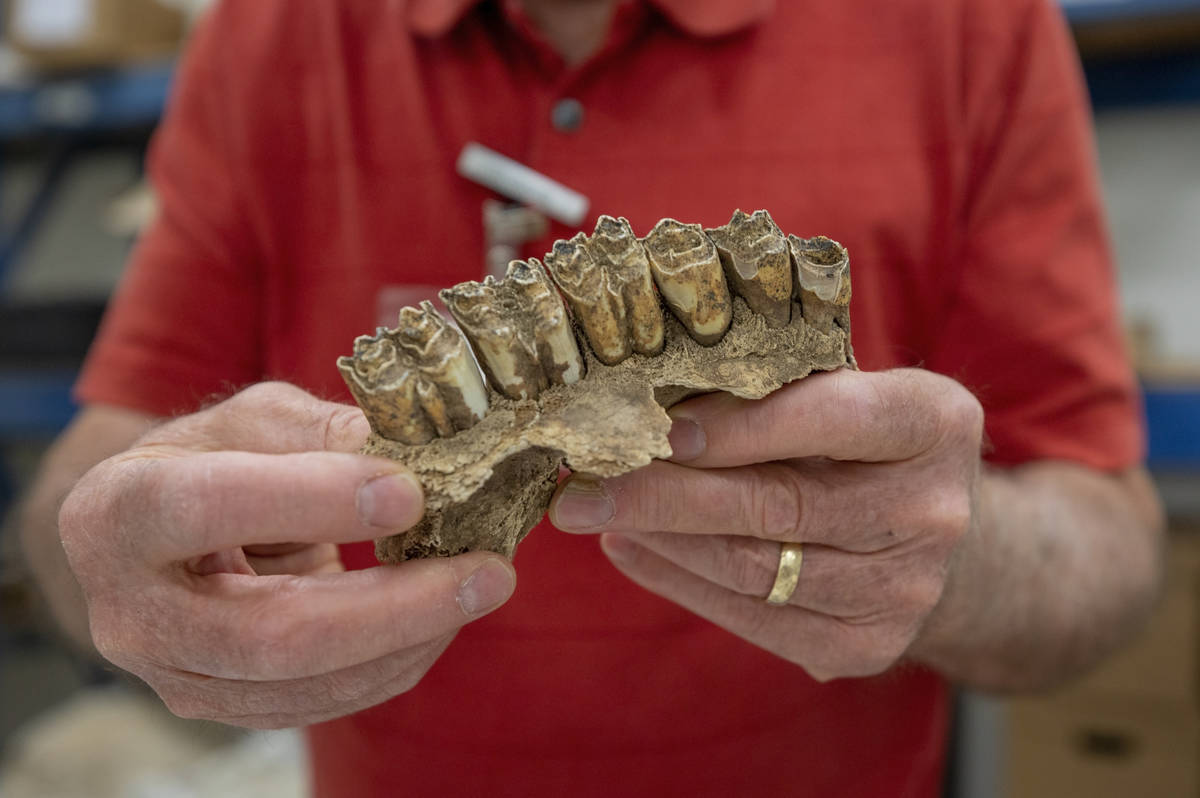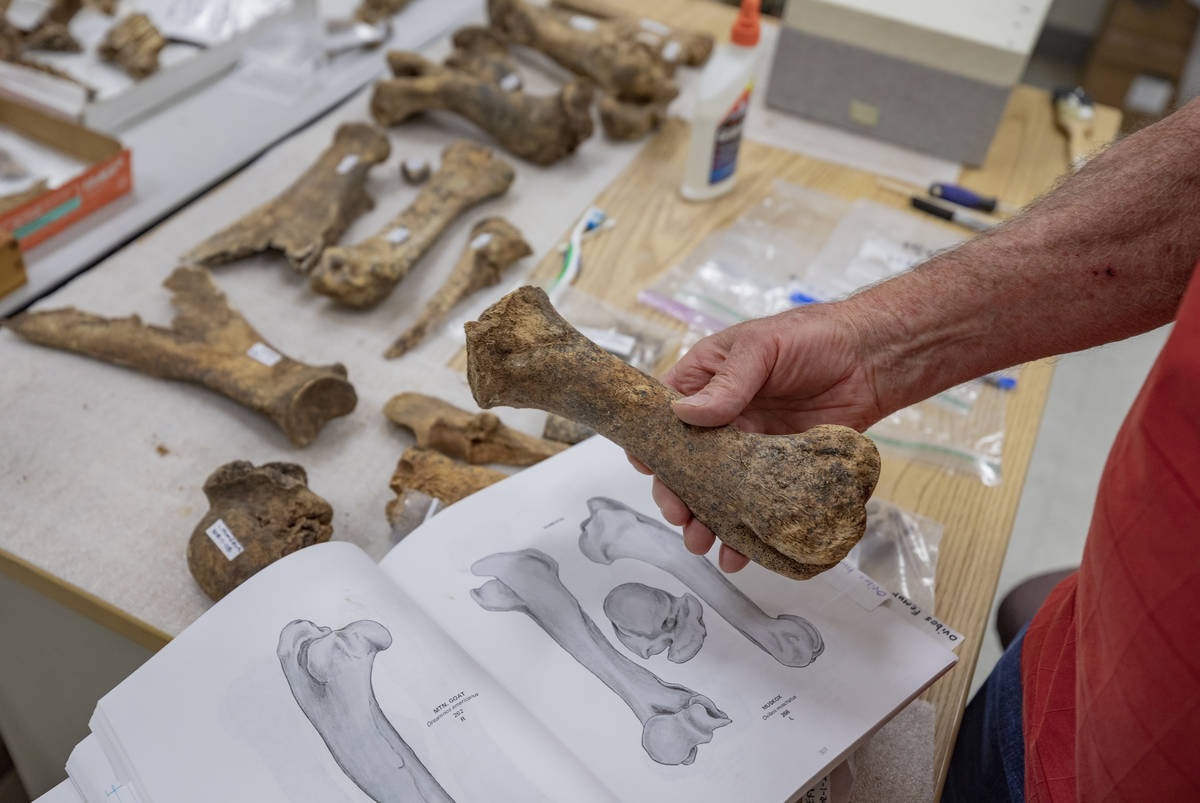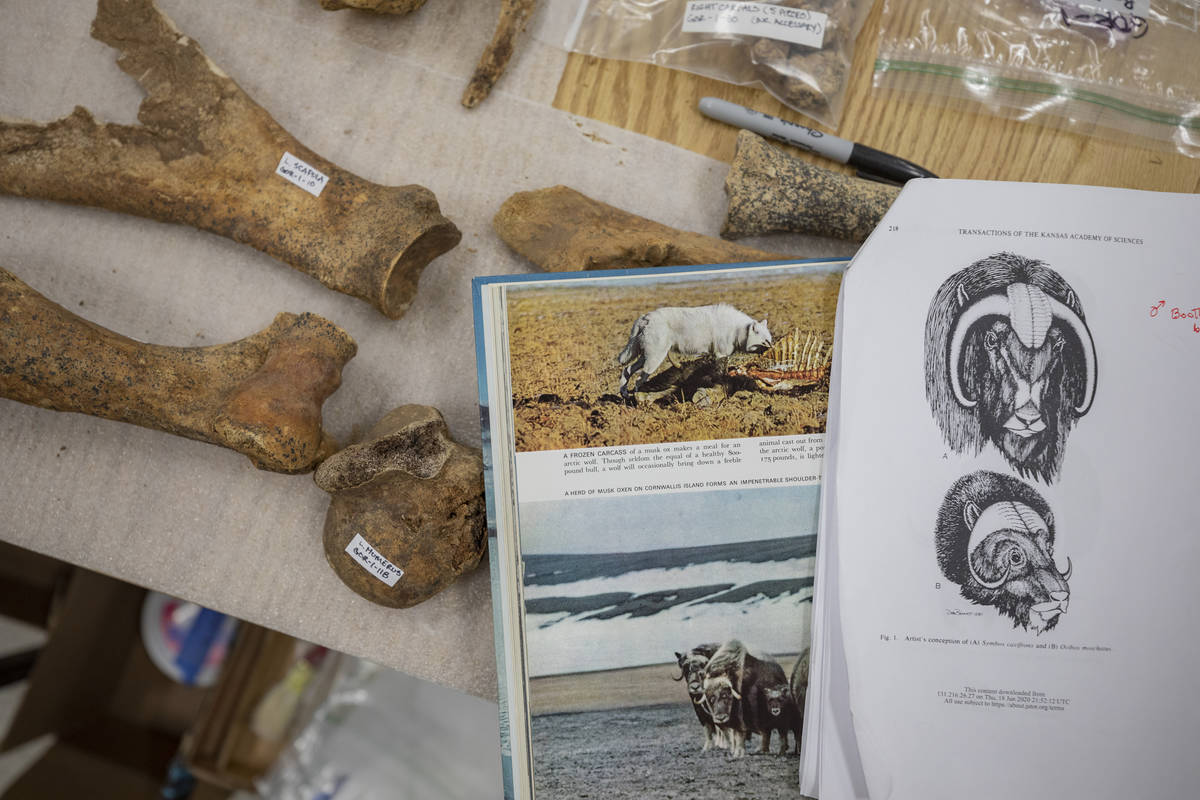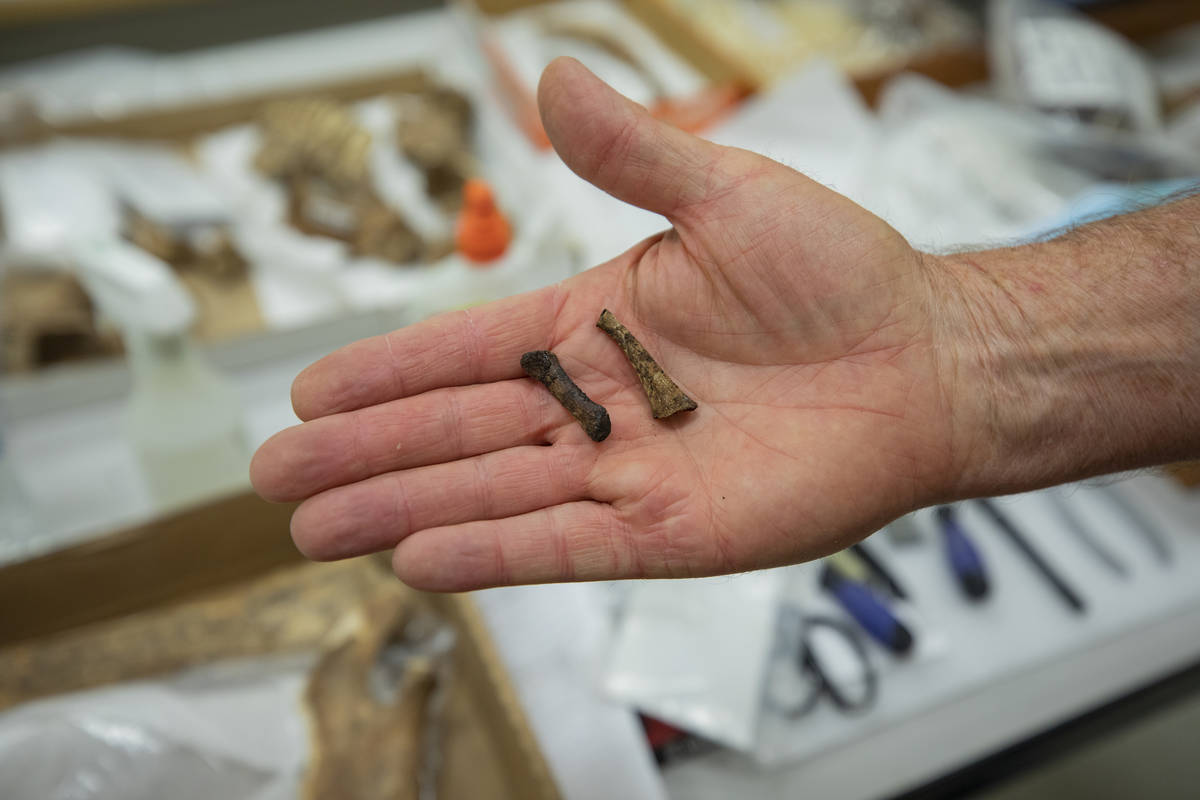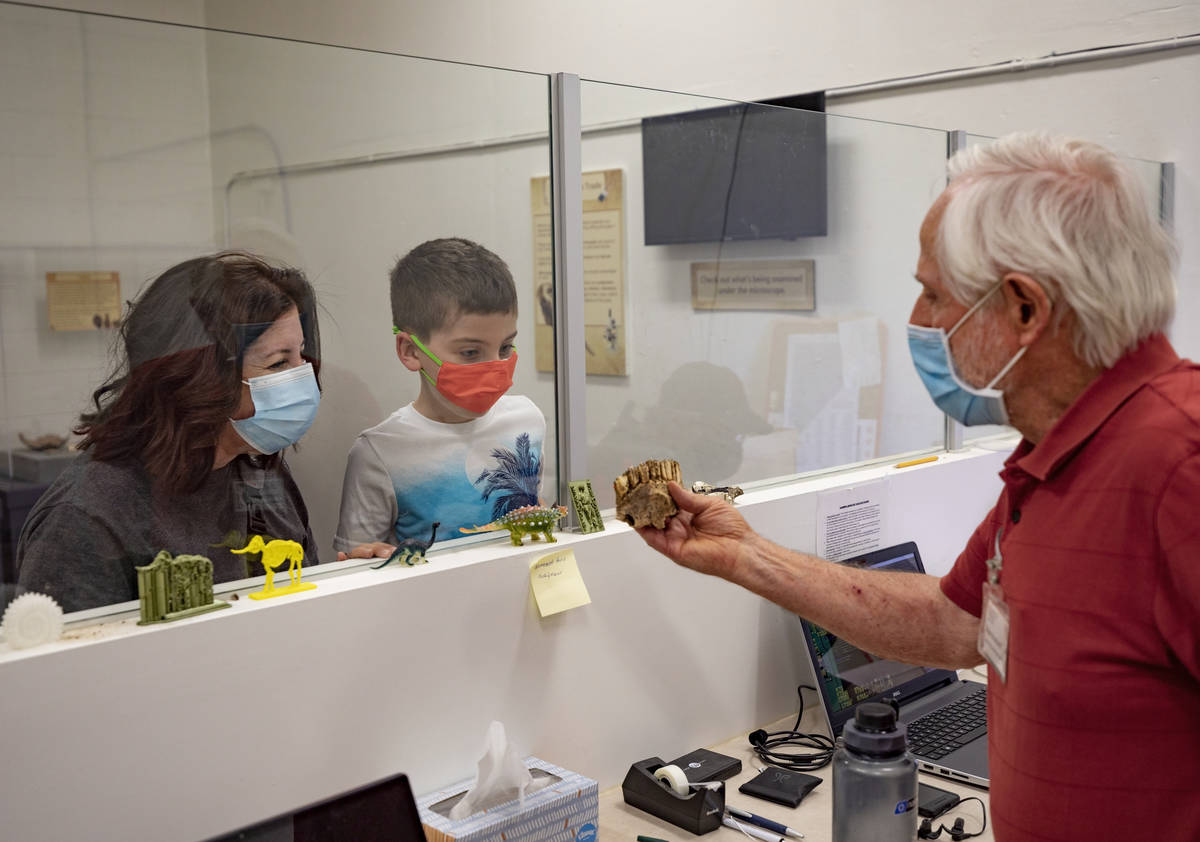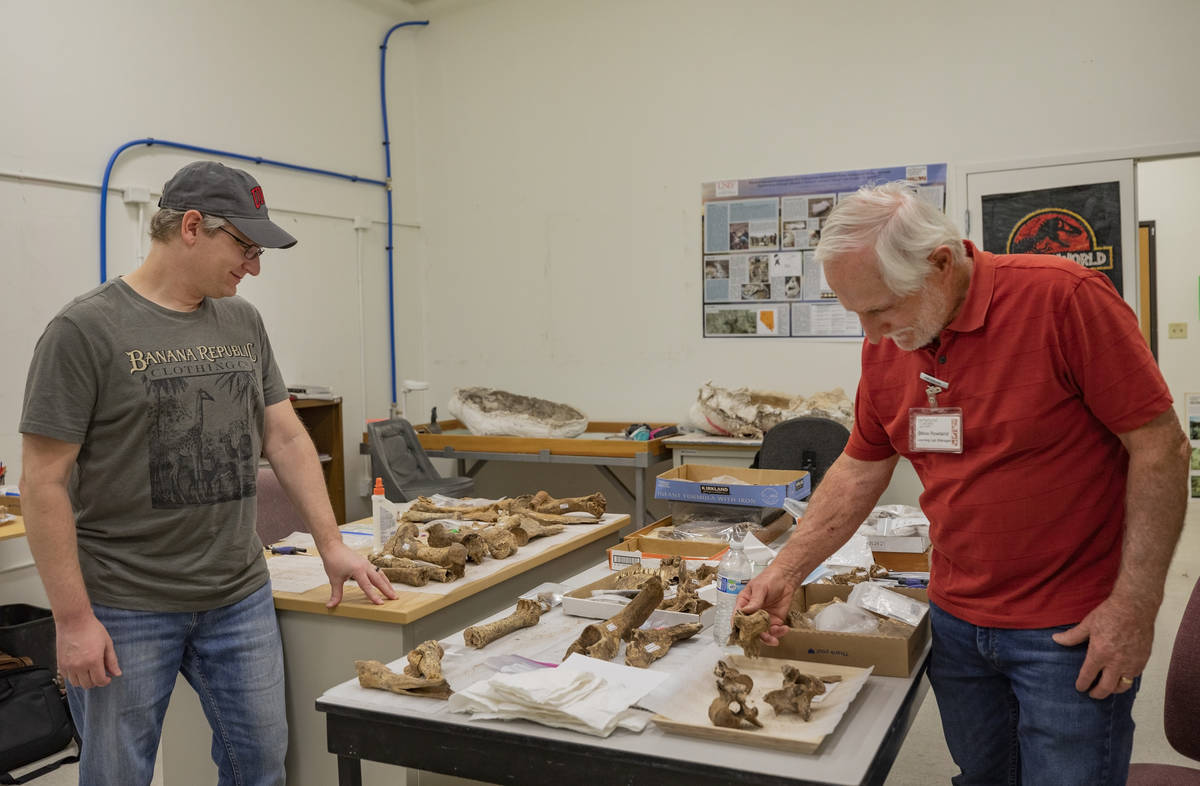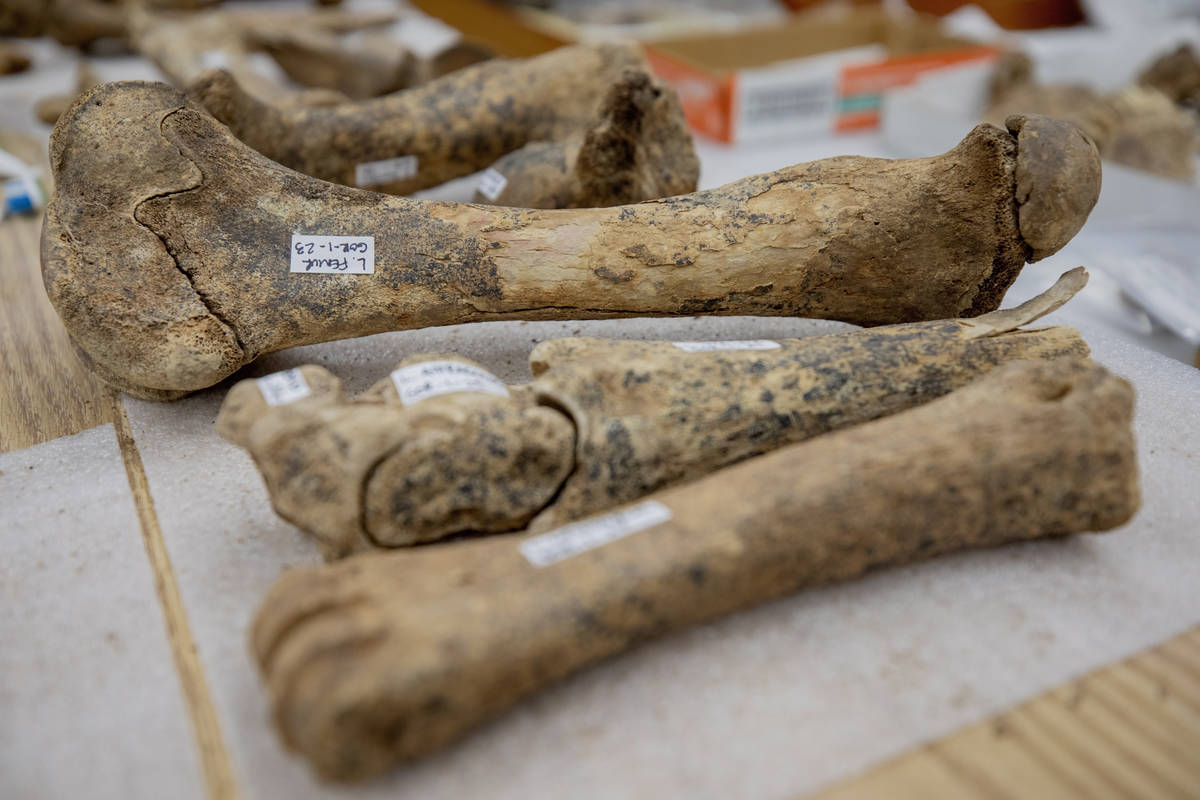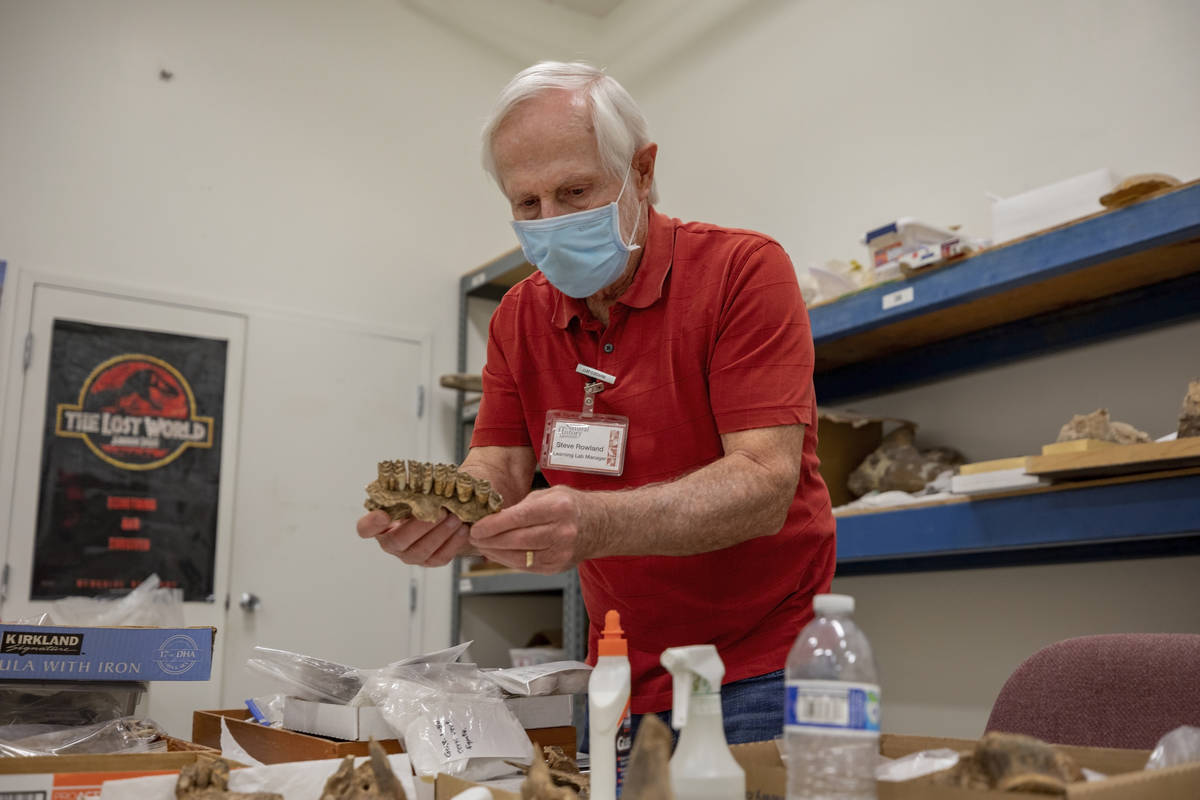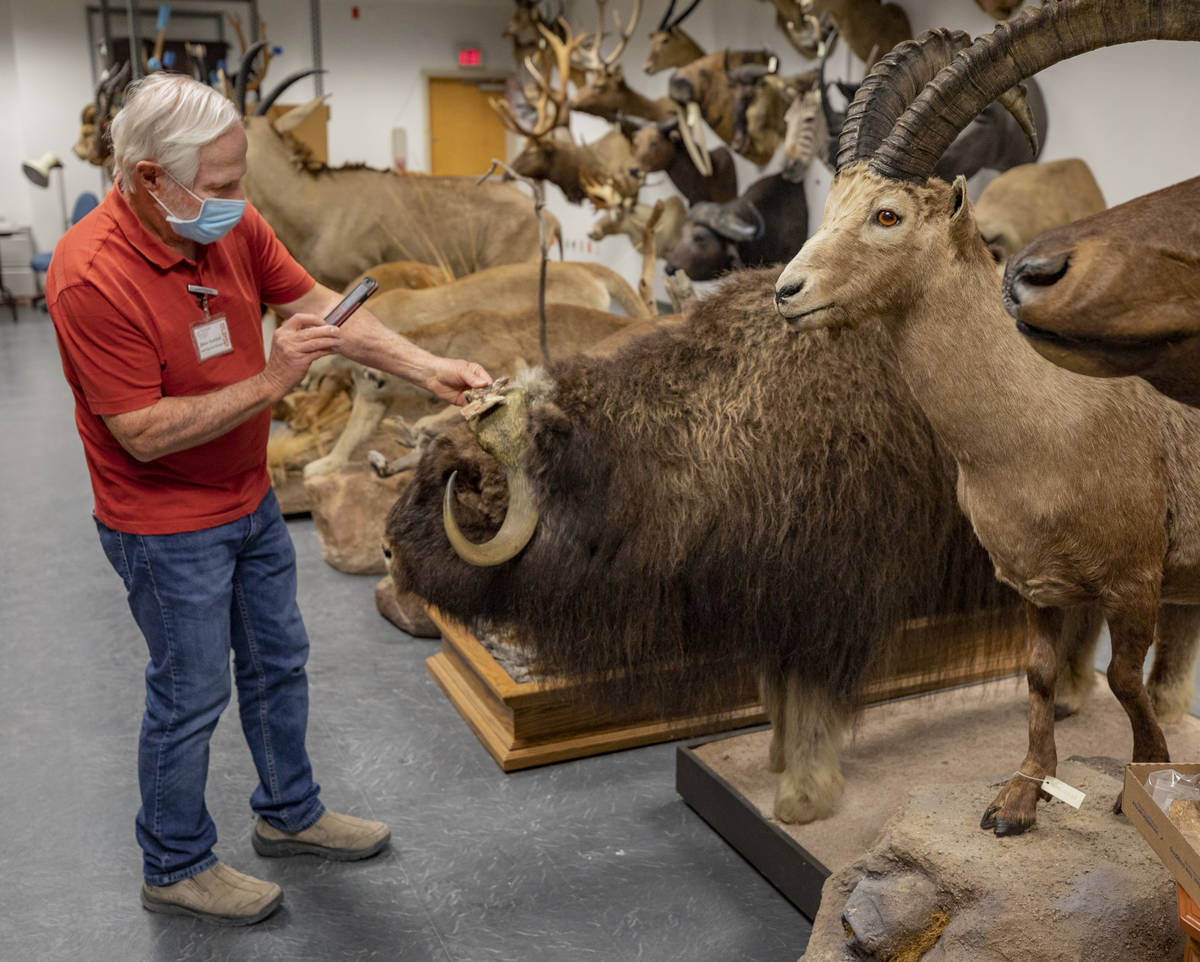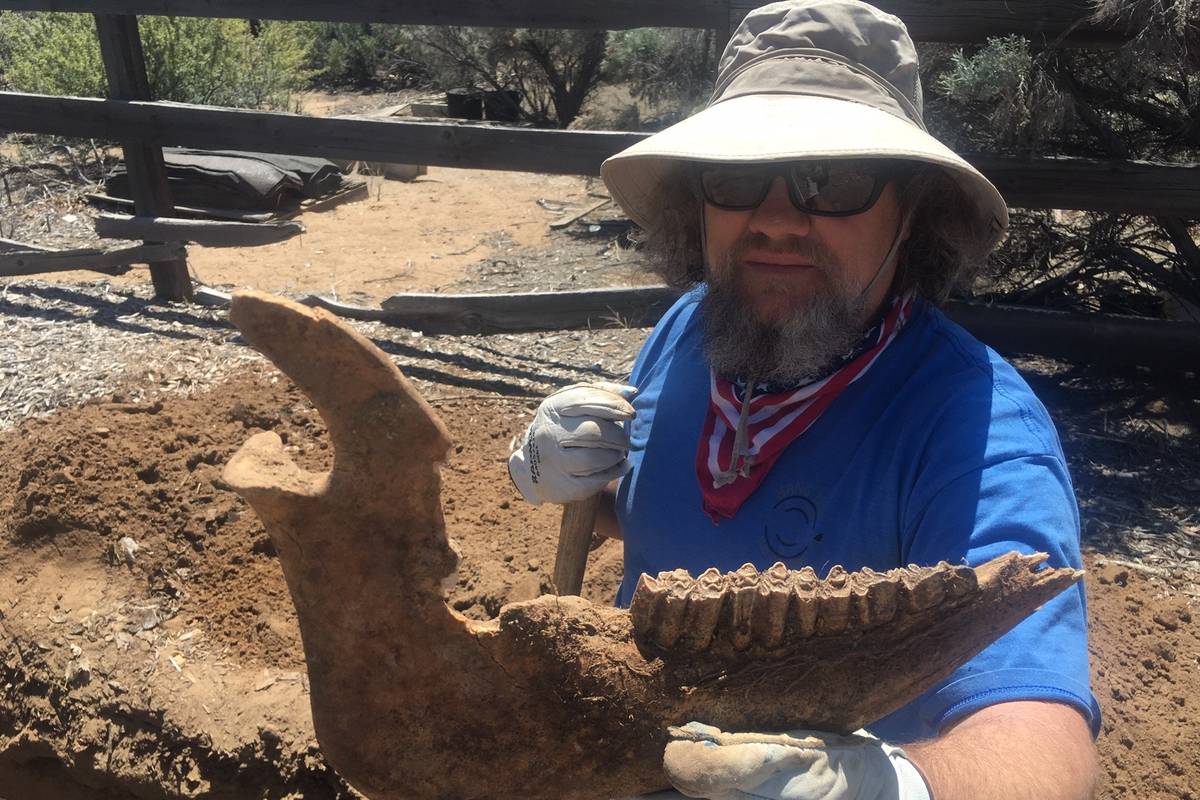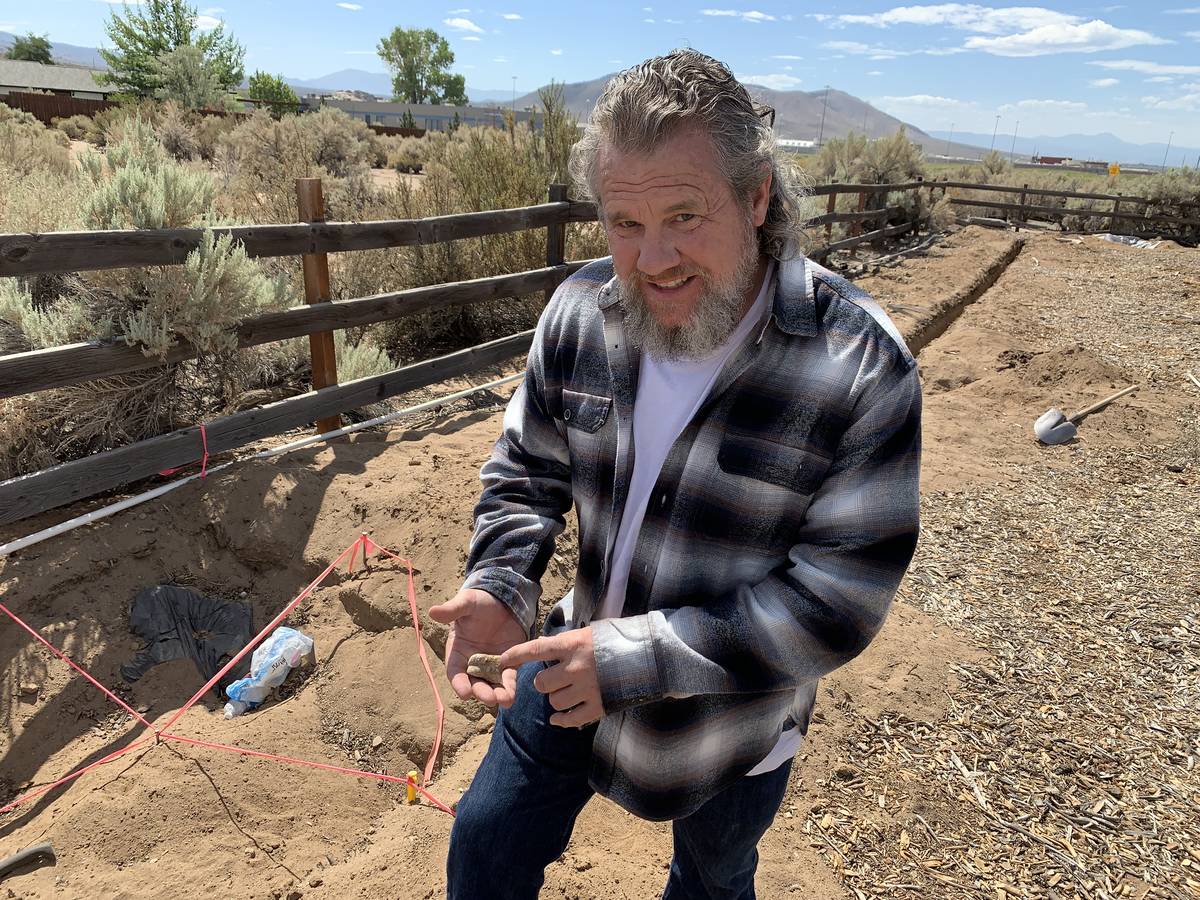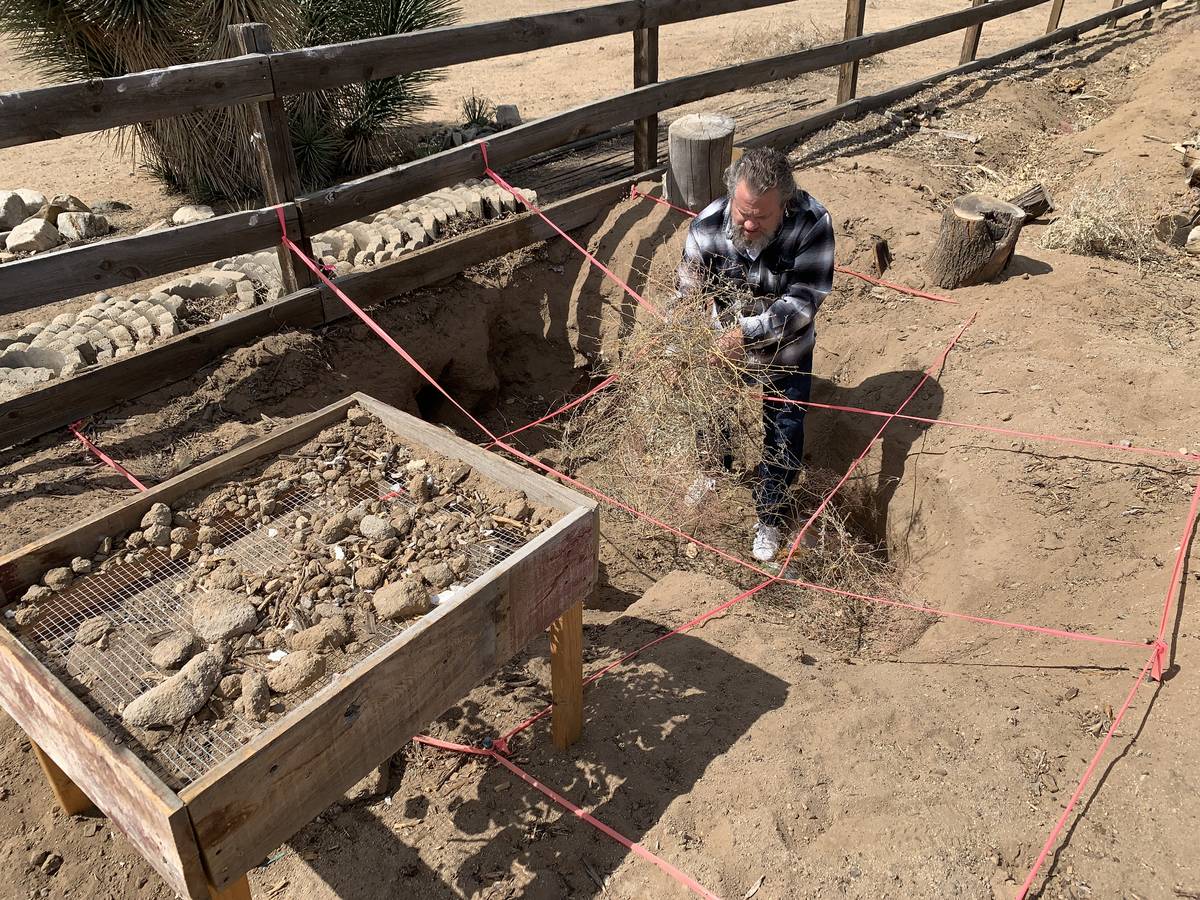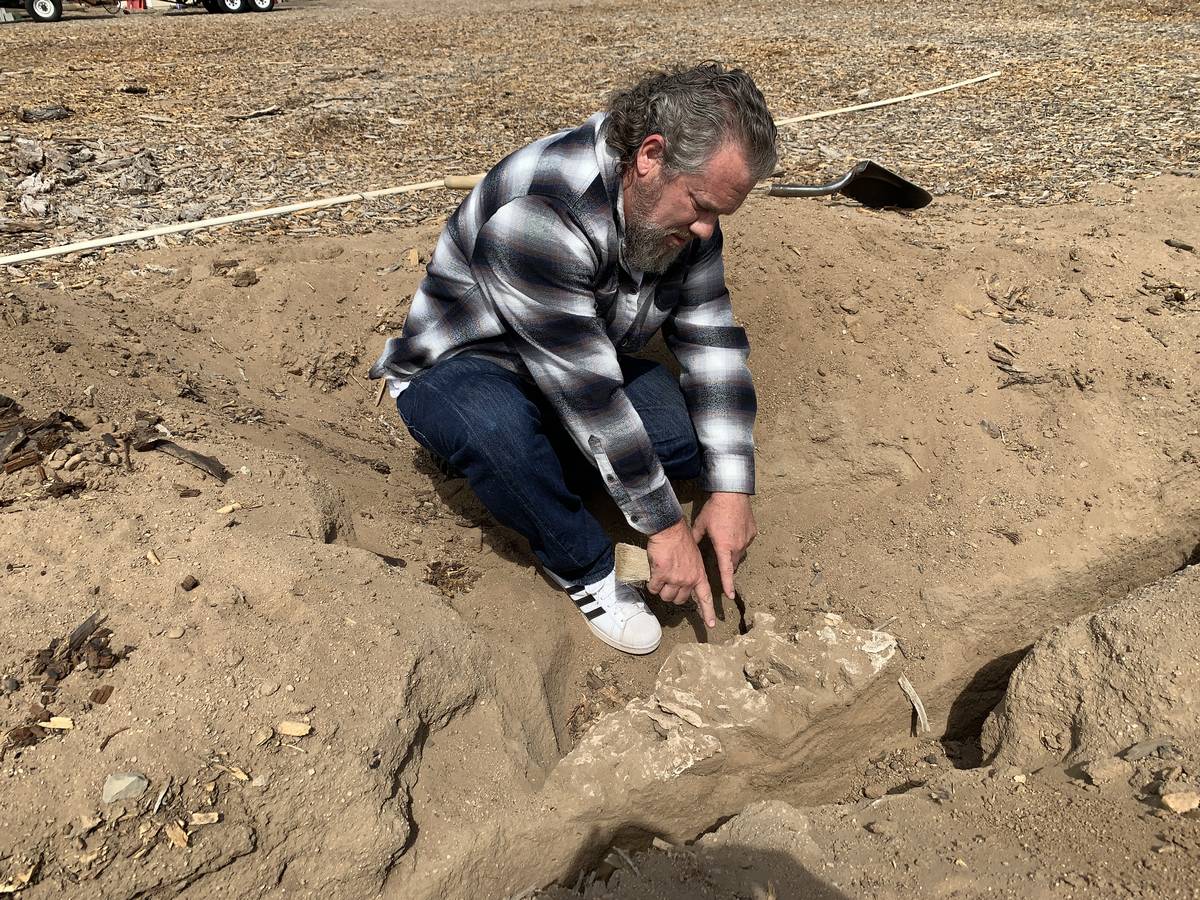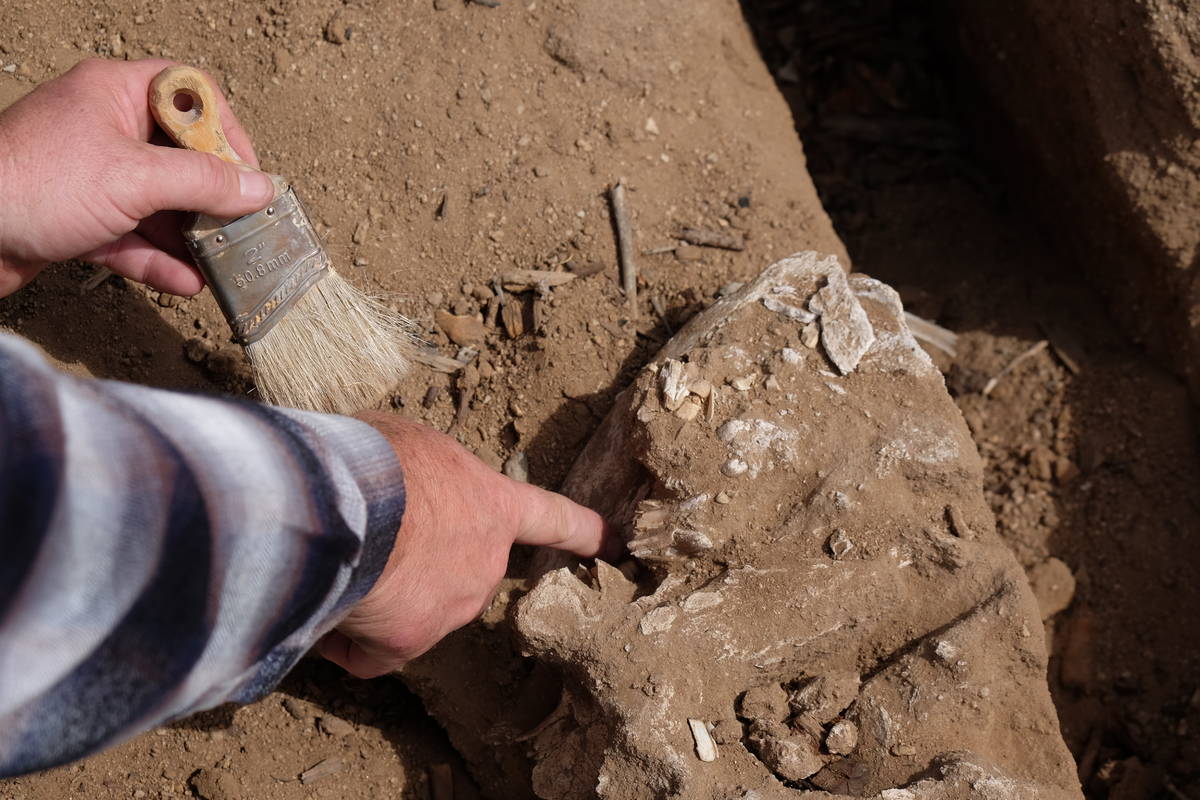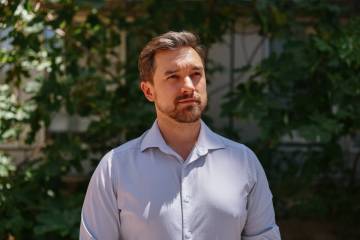Nevada man started to plant trees, but instead unearthed fossil mystery
Tom Gordon of Carson City didn’t expect his backyard to become an excavation site when he starting planting trees this summer, but that’s what happened after he found what looked like an animal graveyard.
Now, with an excavated and still-unfinished backyard, Gordon owns a suite of fossils from multiple Ice Age herbivores, currently on display at the Las Vegas Natural History Museum.
Gordon said it all started when he dug up what looked like the bottom half of a horse’s jaw in early May.
He and his wife had found bones in their yard before but assumed that the land used to be part of a ranch. When they found the jaw and shared pictures with their daughter, she thought it might be a dinosaur.
The family got in touch with paleontologist Steve Rowland, emeritus geology professor at UNLV and lab manager at the Las Vegas Natural History Museum.
When the Gordons sent Rowland photos of the specimens, he and a graduate student packed up and headed north to start an excavation in the Gordons’ backyard.
‘I didn’t know what it could be’
Based on the photos, Rowland said, he wasn’t able to tell exactly what the Gordons had.
“We went to go excavate a bison or maybe a camel,” Rowland said. “I brought a couple of my bone books with me, and we had a really good lower jaw, so I compared the lower jaw that we collected with the bison lower jaw, and it was close but …just not quite a bison. So I was really puzzled. I didn’t know what it could be.”
The excavation turned into a family operation. Gordon’s daughter, Brittaney Akel, brought her husband and children from Arkansas for a few weeks in May and June to dig up fossils with her parents.
“She’s like, ‘Dad, we got to do this,’ ” Gordon said. “… We actually got a good time to bond during the (dig). I like that more than anything, because as kids grow up, you don’t get to spend as much time with them anymore.”
The Gordon family became paleontologists for the week Rowland was there, learning to brush soil from the fossils and create plaster casts to gently lift them from the ground.
“It’s exciting, but it does take a lot out of you at the end of the day,” Gordon said. “You try to get up (and) your neck is sore, your knees are sore. You’re just like, ‘Wow! How long I’ve been doing this?’ You think you’ve only been there an hour and you’ve been out there 12 hours.”
Rowland and his graduate student left after the week of digging and cataloging with a trunk stuffed with fossils and a mystery as to what they had found.
“It wasn’t until I got home and had access to other books that I thought, ‘Oh, wow! It looks like a musk oxen,’” Rowland said. “But that couldn’t be. There’s no musk oxen in Nevada.”
Rowland’s research revealed that musk oxen, though widespread in the Midwest, used to roam the American West, though no remains had been discovered in Nevada. Rowland is still studying the specimens to confirm that his suspicion is true — that the fossils are from the extinct Ice Age helmeted musk ox, which would be the first example of the species in the state.
Dead for nearly 11,000 years
The fossils were only a few feet from the surface, and one of the animals was remarkably intact for having been dead for close to 11,000 years. Dozens of other bones were recovered from the same animal the lower jaw came from.
“All the bones were articulated with each other, laid out just the way they were when the animal died, which is very unusual,” Rowland said. “Usually when an animal dies … it doesn’t take long for the carnivores to find it.”
Gordon’s land is near the Carson River and features soft soil deposited very slowly over time. Less than 5 feet of sediment had accumulated on top of the fossils in the thousands of years they’ve been there.
“I was the first person to see that thing in 11,000-plus years. … Nobody else had messed with it,” Gordon marveled. “To know that I uncovered that and actually saw the skull and everything there for the first time … it kind of gave me the willies a little bit.”
Rowland says he believes they recovered bones from at least four individual animals of the same species, the presumed helmeted musk ox, and some bones of other Ice Age animals nearby, perhaps a type of deer.
And he expects there are plenty more fossils in Gordon’s yard and possibly those of his neighbors. Rowland will be returning to Carson City in September to collect fossils left behind at the Gordons’ and excavate more of the yard.
In the meantime, Rowland is trying to determine the exact age of the fossils using radiocarbon dating and will soon compare them to some helmeted musk oxen bones at the University of Utah to see if they match.
With this new specimen, Roland hopes researchers may to be able to answer questions about the ancient species. Insect pupae found on the animal’s rib cage, for example, will allow studies of the environment the carcass decomposed in, and the surrounding soil can reveal some geological history of the area. They can explore the animal’s habitat by studying the shape of the leg bones, which provide clues about such things as whether it traversed rough terrain. They can also study the teeth from the jaw to learn more about its eating habits.
What will become of the fossils?
Because the fossils were found on his land, Gordon owns them and will have to decide keep them, sell them or display them publicly in a museum.
Both Rowland and Gordon said they’d like to see the fossils end up in a museum, possibly the Nevada State Museum in Carson City.
“I’m hopeful they’ll end up in Carson City or somewhere up in Northern Nevada,” Rowland said. “That’s where they belong because that’s where these animals were living and dying.”
Gordon said this has been a great experience, and he’s happy to see other people excited about his discovery. But while Rowland is ready to get back out exploring and uncovering more fossils, Gordon is ready to finish his yard.
“It’s really unique … being able to find something as rare as they’re saying it is,” Gordon said. “It’s kind of exciting, in a way. But I’ll tell you, the whole reason was to plant my trees, and my wife is still mad because I still haven’t finished the trees.”
Marina Philip is a 2020 Mass Media reporting fellow through the American Association for the Advancement of Science. Follow her on Twitter at @mureeenuh.
What's a helmeted musk ox?
Order: Artiodactyla (hoofed mammals).
Family: Bovidae (musk oxen, bison, sheep, goats).
Species: Bootherium bombifrons.
Height: Described as taller and more slender than the modern musk ox, which can stand as tall as 5 feet at the shoulder. Research ongoing.
Weight: Approximately 934 pounds.
Status: Extinct.
Epoch: Late Pleistocene, which ended about 11,000 years ago
Diet: Herbivore
Other facts:
— Likely became extinct because of climate-driven changes in vegetation. Moose and bison were better able to adapt to the new diet.
— The common name for this species, helmeted musk ox, derives from the helmetlike boney plate that covers the animal's skull. (This feature was not recovered from the Gordons' backyard.)
— Likely the most widespread of the four species of musk ox at the time, they roamed all over North America, from Alaska to California to Texas to New Jersey.
Source: Illinois State Museum, Canadian Museum of Nature



